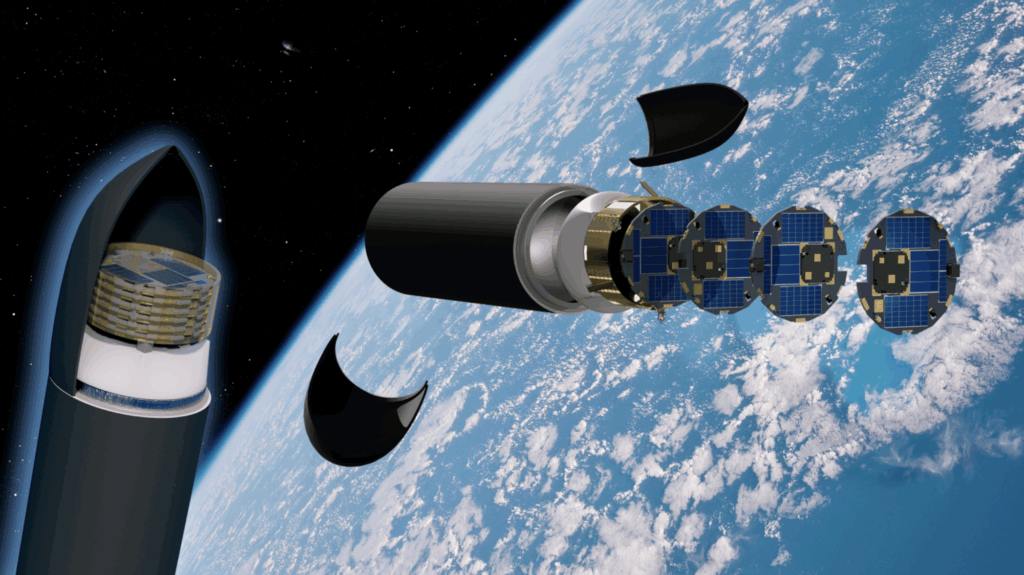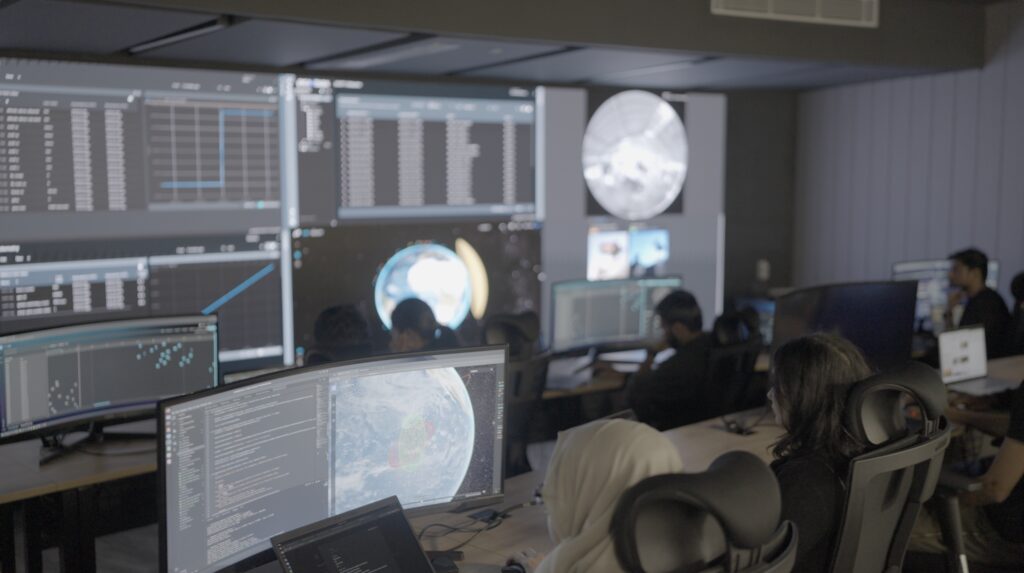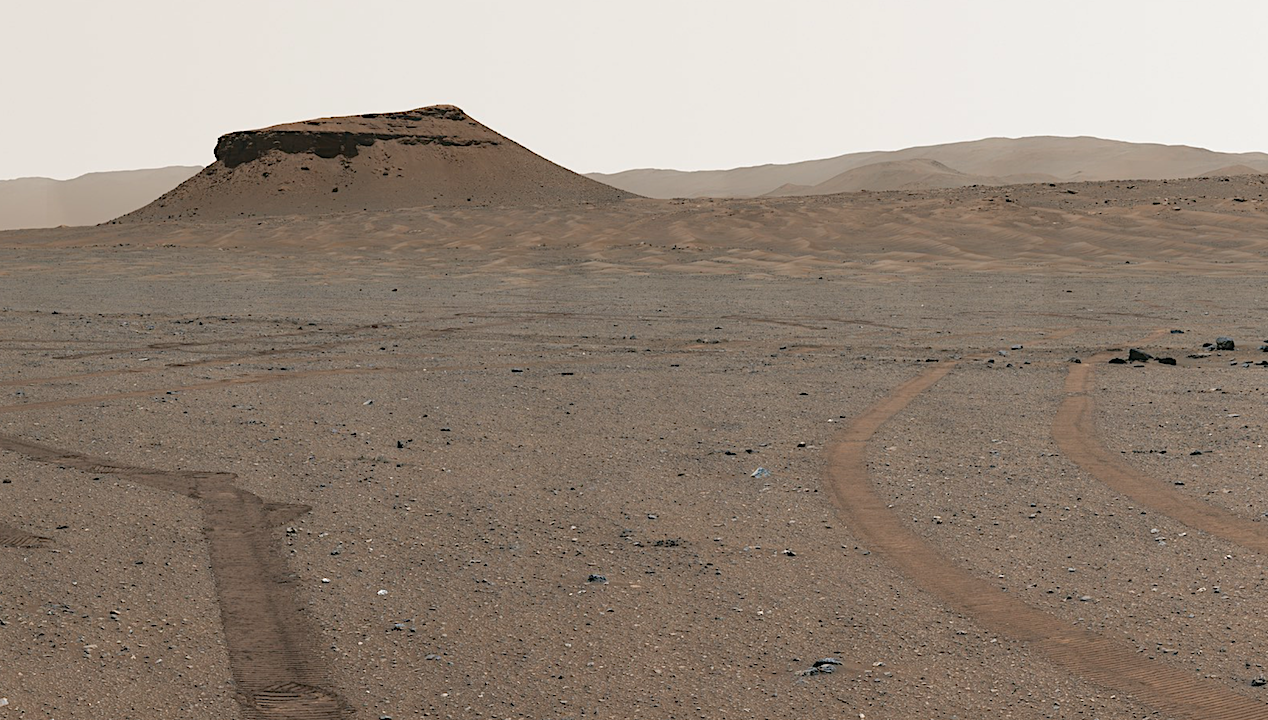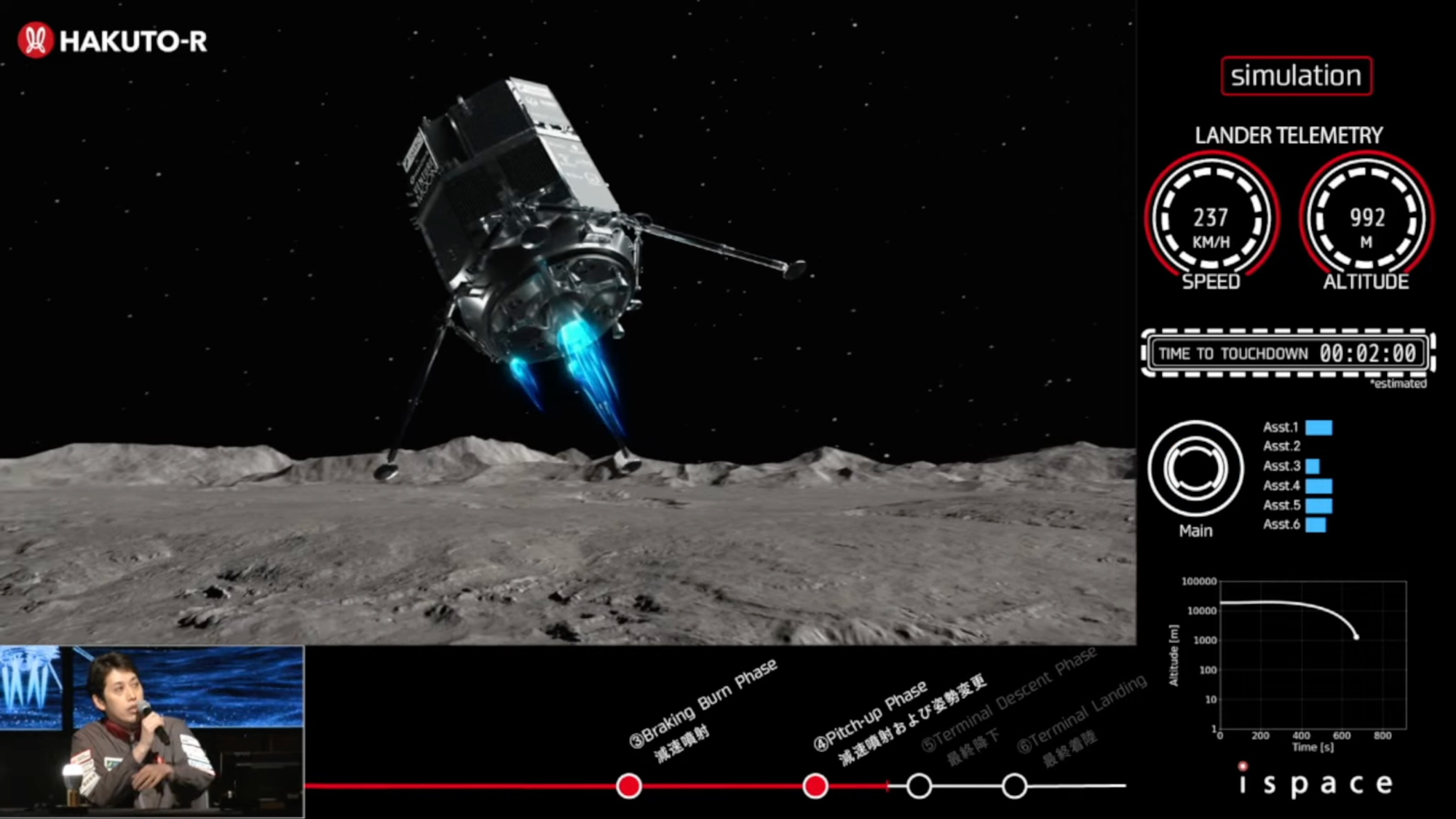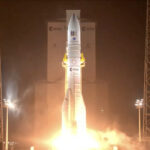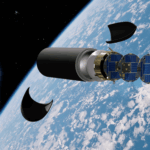Now Reading: A strategy for peaceful Golden Dome development
-
01
A strategy for peaceful Golden Dome development
A strategy for peaceful Golden Dome development

President Trump’s recent bombing of Iran’s nuclear sites marks a major turning point in the maintenance of global security. With war again erupting in the Middle East, the United States now faces the very real possibility of simultaneous crises across multiple theaters. Iran may retaliate through proxies, cyberattacks or missile strikes. Meanwhile, China and Russia are watching closely — and may seize the moment to advance their own ambitions. In particular, the likelihood of a Chinese invasion of Taiwan within the 2020s has significantly increased.
In such a highly confrontational political environment, America’s global military response would depend even more heavily on resilient, uninterrupted satellite operations. Yet, our critical space assets remain vulnerable to disruption, especially over the next several years. As U.S. attention is divided and adversaries probe for weaknesses, China and Russia would almost certainly seek to disable or degrade the Golden Dome missile defense system before it becomes fully operational. These compounding threats make one thing clear: the U.S. must take immediate steps to protect its space infrastructure and shield the Golden Dome from hostile interference during its nascent development which is especially vulnerable.
The Golden Dome — America’s next-generation, comprehensive missile defense system — will likely face its first existential threat within the next several years. Disturbing intelligence indicates that China — and to a lesser extent, Russia — are developing capabilities to neutralize the system even before it is deployed. Staying the current course could render even a limited version of the Golden Dome unattainable. Worse, relying on overly escalatory deterrence postures may inadvertently provoke the very wars the system is designed to prevent.
To avoid that outcome, the U.S. must adopt a strategy that balances capability with restraint — one that supports the successful development of the Golden Dome while deterring adversaries from striking it prematurely.
This approach should rest on two foundational insights: one from a stark critique of bureaucratic stagnation, the other from a shift in space operational doctrine. In 2021, then-Vice Chairman of the Joint Chiefs of Staff General John Hyten sharply criticized the Pentagon’s sluggishness, particularly in responding to China’s rapid advances in space warfare. His successor was urged to “reinsert speed into the process.” Yet despite modest progress, many U.S. space defense systems remain either underdeveloped or excessively provocative.
Since March 2023, General B. Chance Saltzman, Chief of Space Operations, has introduced a more pragmatic and stabilizing vision. His Theory of Competitive Endurance aims to avoid unnecessary escalation while maintaining U.S. dominance in space. With an understanding of the Defense Department’s bureaucratic inertia, Saltzman’s evolving doctrine can be applied to develop the Golden Dome peacefully, efficiently and on time, even amid escalating geopolitical tensions.
Protecting the Golden Dome — and sharing the burden
On January 27, Trump issued an executive order affirming the U.S. commitment to “peace through strength” through the deployment of the Golden Dome. On May 20, Secretary of Defense Pete Hegseth confirmed that the system will defend against a wide range of aerial threats, including ballistic, hypersonic and cruise missiles. Predictably, China and Russia view this system as a direct threat to their strategic deterrents. It is therefore not a question of if, but when, they will attempt to interfere with or preempt the Golden Dome’s deployment — ironically increasing the likelihood of the very conflicts the system is meant to avert.
That same day, Trump announced a three-year development timeline and a $175 billion budget for the system. Yet, a Congressional Budget Office analysis released earlier in May estimated the space-based interceptor component alone could cost between $161 billion and $542 billion over 20 years. Given the rising global risk environment, cost-sharing with allies and partners — not just for funding but also for operational integration — should be pursued vigorously. Moreover, confidence-building measures with adversaries could reduce incentives to strike preemptively, though such efforts must be matched by credible defenses.
Space stalkers: an emerging and consequential threat
China’s anti-satellite ambitions became undeniable in 2007 with its successful ground-based ASAT missile test. In response, the U.S. and allies invested in satellite resilience. But since 2008, Beijing has developed a more insidious threat: dual-use spacecraft capable of rendezvous proximity operations under the guise of peaceful servicing. These “space stalkers” can approach, disable or move satellites at will — providing China with a covert, flexible anti-satellite option with little debris generated.
U.S. officials initially downplayed these capabilities, noting the U.S. had similar dual-use spacecraft. However, I have long warned that China could be the first to deploy stalkers in close proximity to U.S. critical satellites, ready to strike at a moment’s notice. In contrast, the U.S. has yet to declare or deploy dedicated bodyguard spacecraft — dual-use vehicles positioned defensively near key satellites to intercept or deter stalkers.
Even after China’s Shijian-21 demonstrated docking and satellite removal in January 2022, the U.S. response remained muted. Between 2008 and 2022, precious little was done to prepare for this game-changing capability.
Orbital dogfight and the race to secure space
More recent developments show China rapidly operationalizing these capabilities. On May 20, 2025, President Trump named General Michaeel Guetlein as Golden Dome program head. Two months earlier, Guetlein described a 2024 orbital “dogfight” involving five Chinese spacecraft — three Shiyan-24C satellites and two Shijian-605 units — maneuvering in coordination. These satellite families, equipped with robotic arms and rendezvous technology, have significant ASAT potential.
On June 10, 2025, reporting confirmed that Shijian-21 and Shijian-25 are preparing for a new geostationary rendezvous and docking. Such tests underscore China’s relentless pursuit of dual-use rendezvous capabilities and suggest preparations for operational deployment in conflict scenarios — including efforts to neutralize space infrastructure like the center piece of the Golden Dome, the space-based interceptor system.
Strategic implications of space stalking
These developments carry four critical implications:
- Precision targeting: China’s demonstrated ability to dock with “uncooperative” satellites proves that its stalkers can disable or relocate functioning U.S. satellites without creating significant debris or global backlash.
- Scalable attacks: The 2024 dogfight demonstrates that China can coordinate multiple space stalkers simultaneously — indicating swarm attacks may soon be feasible, creating far more devastation to our indispensable space support to our military, civil and commercial operations.
- Systemic vulnerability: The Golden Dome depends on existing constellations — early warning systems, GPS, communications, intelligence and Earth observation satellites. All will soon be threatened by stalkers and other ASAT weapons.
- U.S. readiness gap: While China drills for orbital combat, the U.S. lacks equivalent defensive assets in space. Without deploying our own “dogs,” we risk leaving our satellites — and the Golden Dome in its most critical phase — undefended.
A narrow window to act
Despite this grim landscape, progress is possible. On March 7, 2023, Saltzman cited the danger of robotic arms disabling satellites in orbit. On April 8, 2025, General Stephen Whiting echoed those concerns and, for the first time, confirmed that the U.S. is developing its own dual-use technologies for inspection, refueling — and defense. These bodyguard spacecraft could prevent stalkers from reaching or harming high-value satellites while minimizing debris and escalation.
Encouragingly, the U.S. is not acting alone. Whiting also disclosed a joint U.S.–France orbital operation near a “strategic competitor spacecraft,” likely tied to the European Defense Fund’s (EDF) bodyguard satellite project. The EDF spacecraft is designed to detect vulnerabilities and counter threats with robotic or laser tools. French industry, already active in this domain since 2019, is now playing a lead role.
But words and tests must be followed by funding. On May 6, Saltzman told Congress that flat defense budgets threaten new programs, including Golden Dome, as well as badly needed space-based defensive measures. He cited expanding responsibilities and insufficient resources to meet them. The time to prioritize is now. After all, developing and deploying the 200 necessary bodyguard spacecraft is estimated to cost around $10 billion over several years — a small fraction of the hundreds of billions that the Golden Dome could consume in as little as three years. Most importantly, defending against space stalkers is a prerequisite for any viable version of the Golden Dome.
One war, many fronts — one space, shared risk
The recent bombing of Iran’s nuclear facilities may well be a prelude to wider conflict. America could soon find itself stretched across multiple battlefronts — from the Middle East to Eastern Europe to the Indo-Pacific. All these conflicts rely on space-based capabilities, yet our satellites remain exposed to unprecedented threats especially within the next several years. Meanwhile, China and Russia are poised to challenge U.S. leadership in space — and they will not hesitate to sabotage the Golden Dome in its infancy if given the opportunity.
This is the moment to act. The Golden Dome cannot succeed without resilient space support. And space resilience cannot be achieved without bodyguard spacecraft, rapid deployment of defensive technologies and a strategic framework that reflects today’s multi-theater threats. Peaceful development of the Golden Dome is still possible — but only if we fully confront the reality that space is no longer a sanctuary. It is a domain contested in peacetime, vulnerable in crisis and decisive in war.
The opportunity to act is golden. But it may also be the last.
Brian Chow is an independent policy analyst with a Ph.D. in physics, an MBA with distinction, a Ph.D. in finance, and over 180 publications.
SpaceNews is committed to publishing our community’s diverse perspectives. Whether you’re an academic, executive, engineer or even just a concerned citizen of the cosmos, send your arguments and viewpoints to opinion@spacenews.com to be considered for publication online or in our next magazine. The perspectives shared in these op-eds are solely those of the authors.
Stay Informed With the Latest & Most Important News
Previous Post
Next Post
-
 012024 in Review: Highlights from NASA in Silicon Valley
012024 in Review: Highlights from NASA in Silicon Valley -
 02Panasonic Leica Summilux DG 15mm f/1.7 ASPH review
02Panasonic Leica Summilux DG 15mm f/1.7 ASPH review -
 03From Polymerization-Enabled Folding and Assembly to Chemical Evolution: Key Processes for Emergence of Functional Polymers in the Origin of Life
03From Polymerization-Enabled Folding and Assembly to Chemical Evolution: Key Processes for Emergence of Functional Polymers in the Origin of Life -
 04How New NASA, India Earth Satellite NISAR Will See Earth
04How New NASA, India Earth Satellite NISAR Will See Earth -
 05And Thus Begins A New Year For Life On Earth
05And Thus Begins A New Year For Life On Earth -
 06Astronomy Activation Ambassadors: A New Era
06Astronomy Activation Ambassadors: A New Era -
07SpaceX launch surge helps set new global launch record in 2024












